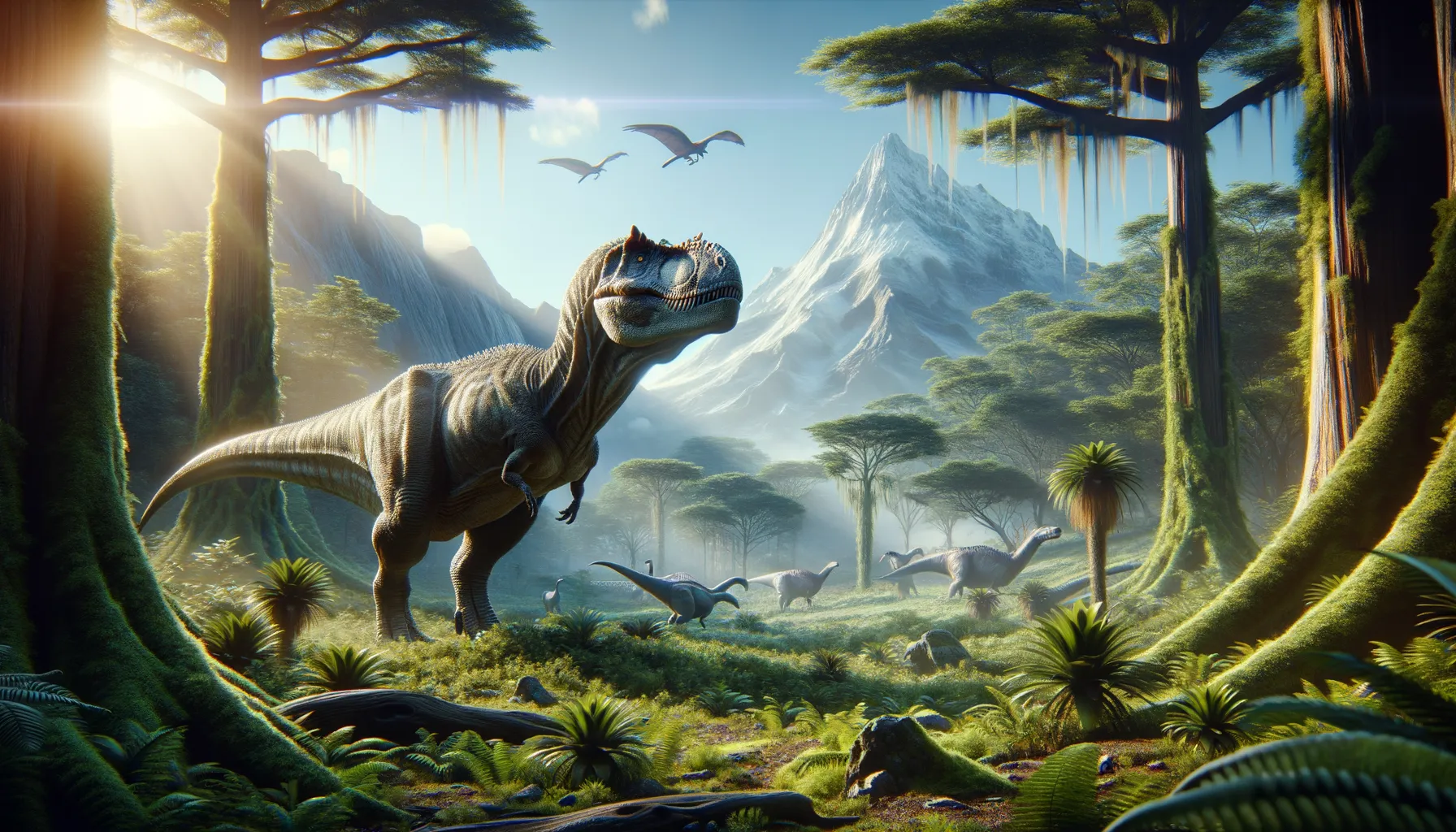
Epanterias
A Jurassic predator of great mystery.
Period
Jurassic
Length
Estimated between 35-40 feet.
Height
Around 12 to 15 feet at the hip.
Weight
Approximately 2-4 tons.
Epanterias was a large, carnivorous dinosaur that roamed North America during the Jurassic period. Thought to be closely related to Allosaurus, Epanterias is known primarily from limited skeletal remains, which makes its classification somewhat ambiguous. This fearsome predator likely dominated its ecosystem, preying on large herbivorous dinosaurs. Although it has yet to reach the fame of some other theropods, Epanterias offers key insights into the ecological dynamics of its time.
Diet
Epanterias was a carnivore, preying on large herbivorous dinosaurs. Its diet would have consisted mainly of creatures it could overpower with its size and strength.
Hunting
As a predator, Epanterias likely relied on ambush techniques to catch its prey. Its sharp teeth and powerful jaws were instrumental in taking down large dinosaurs, and it may have hunted alone or in small groups.
Environmental challenges
Epanterias existed in a world that experienced significant environmental shifts, from changing sea levels to varying climate conditions. These shifts could have affected the availability of prey and would have required adaptability to survive. Competition with other large theropods would have been a constant pressure. Additionally, surviving seasonal changes would have been crucial to its everyday life.
Speed
Moderate, similar to other large theropods.
Lifespan
Estimated to be around 20-30 years.
First discovery
Identified from fragmentary fossils in the 1870s, Wyoming.
Fun Facts
- Epanterias was a large theropod dinosaur that lived during the Late Jurassic period, about 150 million years ago.
- It was discovered in the Morrison Formation, a famous dinosaur fossil site in the western United States.
- Epanterias is often thought to be closely related to or possibly a large specimen of the well-known dinosaur Allosaurus.
- The name 'Epanterias' means 'upon a cousin,' hinting at its possible relationship with other similar theropod dinosaurs.
- Since only fragmentary remains have been found, there's still some debate among scientists about the exact classification of Epanterias.
- Epanterias was likely a fierce predator, with strong limbs and sharp teeth ideal for hunting other dinosaurs.
- Due to limited fossil evidence, much about the lifestyle and appearance of Epanterias remains a mystery.
Growth and Development
Like many theropods, Epanterias would have undergone rapid growth during its juvenile years, requiring a high intake of food to sustain. Its skeleton would have developed into a robust framework capable of supporting its massive body. Understanding its growth patterns can shed light on its life expectancy and ecological role.
Habitat
Epanterias lived in a semi-arid environment with seasonal variance, featuring forests and open plains. These areas provided ample hunting grounds with diverse prey species. The environment was also home to a variety of plant life that supported the herbivorous dinosaurs, which in turn supported theropods like Epanterias.
Interaction with other species
Epanterias likely competed with other large predators for food, sometimes engaging in direct confrontation over prey. It would have had to navigate social dynamics within its species, especially if it hunted in groups. Its presence would have had significant impacts on the populations of herbivorous dinosaurs and possibly on smaller carnivores.
Natural lifespan
Its natural lifespan could have been impacted by injuries and environmental pressures.
Reproduction
Epanterias likely laid eggs, as with other theropods, with evidence suggesting possible nesting behaviors. Young offspring would have been vulnerable and reliant on concealment and the protection of adults for survival. Parental care, if present, would have been crucial for keeping offspring safe until they could fend for themselves.
Social behaviour
Though definitive evidence is scarce, Epanterias might have exhibited solitary behavior typical of apex predators. However, it might have gathered in small groups for hunting or mating purposes. Territory marking and vocal communication could have been part of its behavioral repertoire.
Fossil locations
Fossils of Epanterias have been found in the Morrison Formation of the western United States, particularly in Wyoming. These finds offer insights into the diversity of theropods during the Jurassic period. Fragmentary remains indicate it shared habitats with other famous dinosaurs such as Allosaurus and Stegosaurus.
